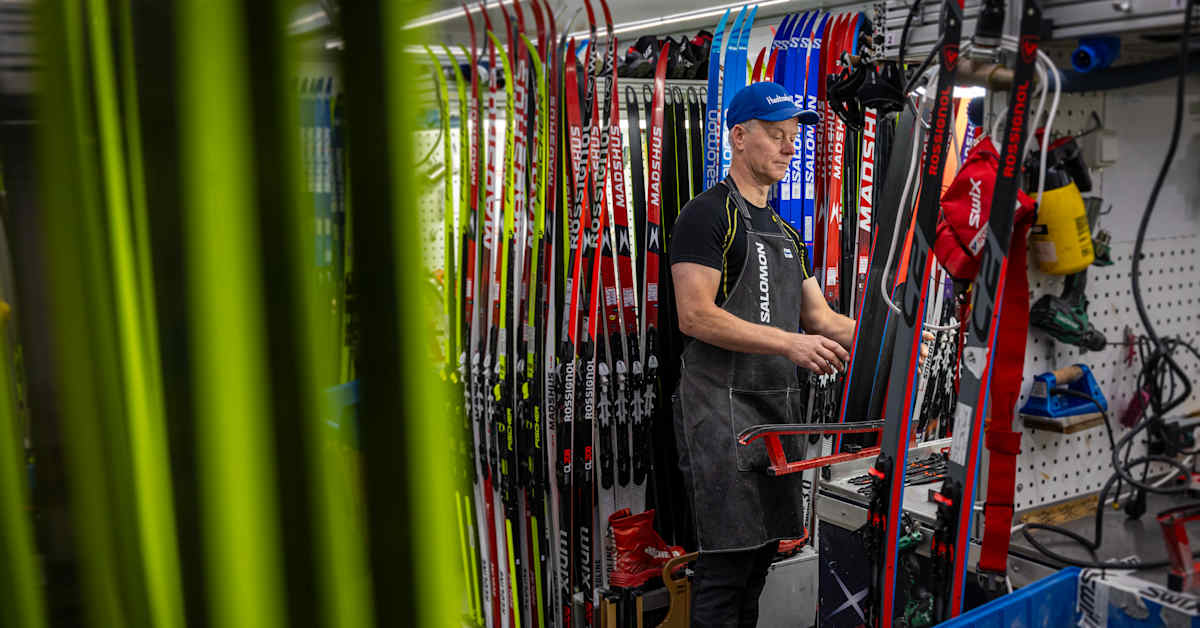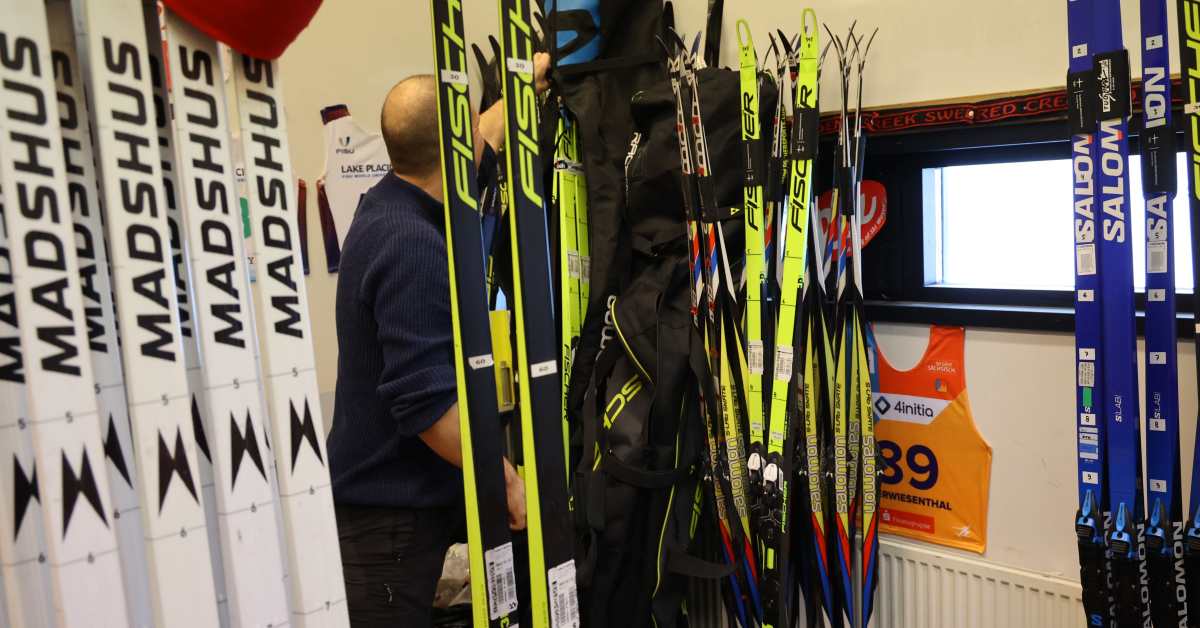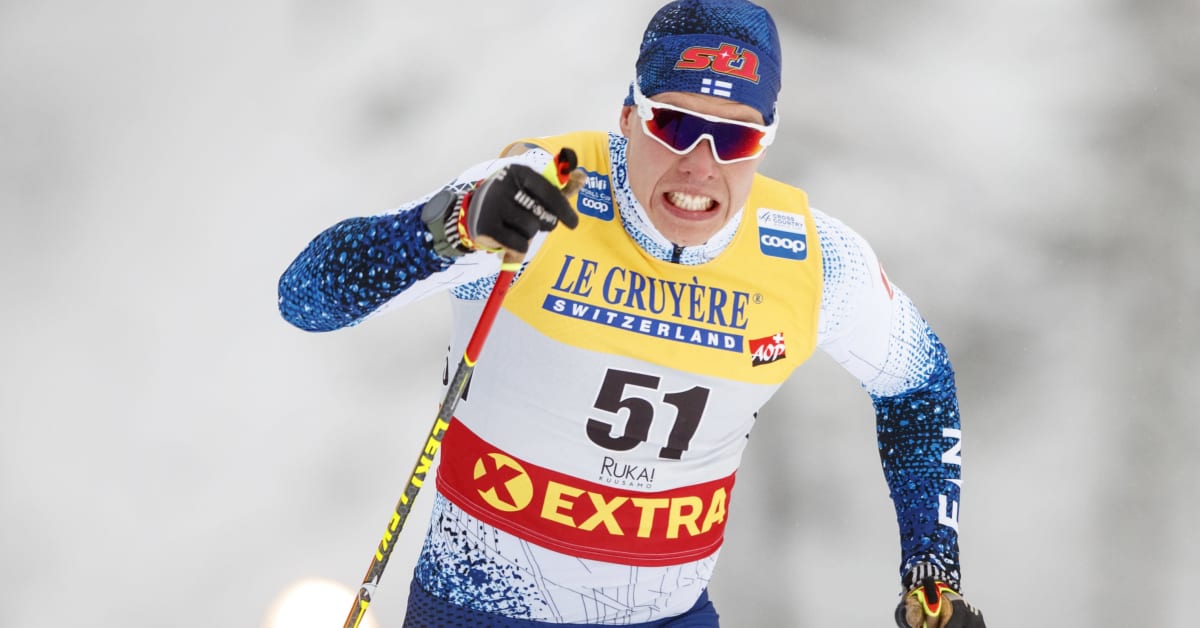
How Competitive Ski Gear Exploded - Top Nations Transport Huge Quantities of Skis, With Only a Fraction Used for Competition
Originally published in Yle on November 25, 2024
The scene is striking as elite ski technicians Mika Venäläinen and Niko Nättinen open the door to a dedicated ski maintenance facility reserved solely for Iivo Niskanen at Muonio's Oloks. They reveal a vast collection of bright yellow Fischer skis. From this array, Niskanen and his team must identify the pairs with which he hopes to expand his four-title winning streak at the World Championships in Trondheim this February and March.
Venäläinen, who served as Niskanen's and many retired stars' personal ski technician, joined his current ski guru Niko Nättinen at Muonio to help tackle this hectic task.
"In this area, there are over a hundred pairs of skis. I understand that to an outsider, it seems quite irrational, even though a significant portion is returned to the manufacturer after testing," Venäläinen laughs.
The athletes' ski equipment is owned by the ski team, essentially the manufacturer. If the equipment from Iivo Niskanen were to be purchased from this maintenance facility, Mika Venäläinen quickly calculates the cost: 100,000 euros.
From this impressive ski stock, approximately 35-40 pairs will eventually return to the team's ownership throughout the season, Venäläinen roughly estimates.
The explosive growth in the number of skis relates to the ski maintenance trucks, with Finland receiving its first version in 2013. Previously, skis were transported in vans, and athletes had to lug their gear themselves packed into ski tubes.
Although a maintenance truck specifically for the A team was present in Oloks, its costs were covered by the private Team Electrofit. While the truck is loaded to the brim with skis during the international competition season, the quantities brought to Muonio were quite modest.
Most Finnish A-team skiers brought their equipment, and star guest, Norway's Olympic winner Erik Valnes, was satisfied with just the pair of skis he carried in his car’s ski box.
A-team skis will be loaded onto the truck essentially this week as elite skiers prepare for the World Cup starting this weekend in Kuusamo. Team’s wax manager Heikki Tonteri estimated that there were about 150 pairs of skis in the truck in Muonio. When the serious action begins, the numbers change drastically.
"When the truck is packed to capacity, it carries about 800 pairs of skis," Tonteri assesses.
Yle Urheilu has also heard estimates suggesting a much larger quantity, but even Tonteri's number is massive. With the A-team selecting a total of 18 athletes for this season, the average number of skis per skier would be close to 50. Yet such simple math isn’t that straightforward. Just as in a hockey team’s dressing room, where experienced players take the best spots, the same logic applies in this equally popular sport in Finland.
"I have about 40 pairs with me, maybe the least in the whole group. Approximately half for classic and half for freestyle," says Jasmin Kähärä, a member of the A-team’s youth section.
Both Tonteri and Venäläinen estimate that some of the most experienced skiers store as many as 75-80 pairs of skis for the entire season. While this number might seem ridiculous to someone unfamiliar with elite skiing, it's hardly considered reasonable even within the sport’s insiders.
"If there is such a number of skis, it raises the good question of whether the risk of misselection becomes too great. Managing such a quantity and keeping track of the skis is quite difficult," says Marko Anttola, father of national team skier Niko Anttolan.
He indeed has perspective on this subject as Anttola served as the ski technician for the legendary Mika Myllylän in the 1990s. Back then, the idea of transporting such quantities of skis at tournaments would have been out of the question for reasons addressed later in this article.
"There were a lot back then as well, but not in these quantities. The trend now seems to be that new skis are constantly coming in. Back then, we typically used the same gear for much longer," Anttola recalls.
The current trend of ski ski production focuses heavily on new entries, creating immense pressure on select ski properties that athletes have not yet fully explored. This increase in ski quantities correlates to a more refined testing process, as there are now more skis transported than every before, creating pressure on logistics, finance, and athlete management.
When the International Ski Federation (FIS) enforced the ban on fluorinated waxes last season, it meant a significant gear overhaul for many athletes. Where fluorinated waxes had once equalized disparities between large and small skiing nations, the focus has shifted to skiing properties now more than ever. Since fluor-free blocks for waxes are even deemed more expensive than previously costly fluorinated waxes, the race for competitive advantage is perhaps fiercer than before.
Athletes like Iivo Niskanen find themselves in a fortunate position, where all the properties and weather compatibilities of his gear are easily accessible through the analytical capabilities of his technician Niko Nättinen’s excel sheets.
Niskanen notes that manufacturers push new top-tier expensive skis to competitive skiers not without purpose, as their logos appear more frequently than ever on old materials presented in TV broadcasts.
"It’s all about product development. If anyone thinks that only running shoes have improved during recent years, they are mistaken he references the current records in track and street footwear which have revolutionized the materials used.
"If I were to use a pair of skis from the Sochi Olympics (2014) for an upcoming competition, it would be impossible to succeed."
See Also


Vuokatti Elevates Ski Maintenance Ahead of Upcoming Championships
April 25, 2024 / Yle

Verneri Suhonen Looks Forward to the New Season Ahead of Finnish Cup
November 02, 2024 / Yle